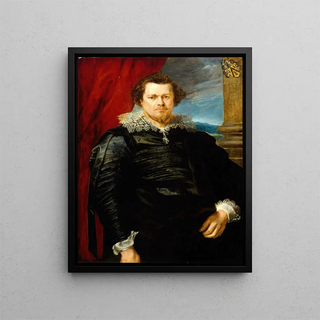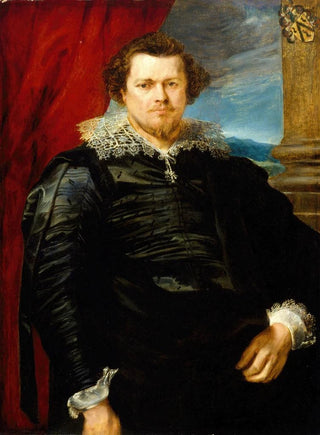Art print | Portrait of Jaspar de Charles van Nieuwenhoven - Antoine van Dyck


View from behind

Frame (optional)
Portrait of Jaspar de Charles van Nieuwenhoven - Antoine van Dyck – Engaging Introduction
The "Portrait of Jaspar de Charles van Nieuwenhoven" by Antoine van Dyck is an iconic work that exemplifies the artistic genius of one of the greatest portraitists of the 17th century. Capturing the very essence of its subject, this painting does more than depict a man; it also evokes a period, a culture, and a lifestyle. Van Dyck's ability to immortalize the character and personality of Jaspar de Charles van Nieuwenhoven demonstrates his skill in translating complex emotions onto the canvas. Viewing this artwork transports the observer into a world where painting becomes the mirror of a rich social and historical reality.
Style and uniqueness of the work
Van Dyck's style is distinguished by its refinement and ability to blend realism with a certain idealization. In the portrait of Jaspar de Charles van Nieuwenhoven, one can observe mastery of nuances and textures that bring the subject's face to life. The details of the clothing, carefully rendered, testify to an exceptional craftsmanship that goes beyond simple representation. Light plays a crucial role in this composition, illuminating Nieuwenhoven's face while creating delicate shadows that add depth to the work. This painting also embodies the baroque trend, where the expression of feelings and theatrical staging are omnipresent. Every element, from the background to the posture of the subject, contributes to an atmosphere of dignity and nobility, inviting the viewer to immerse themselves in the aristocratic universe of the 17th century.
The artist and his influence
Antoine van Dyck, a pupil of Rubens, developed a style that is uniquely his own, influencing an entire generation of portraitists. His ability to capture the personality of his subjects while endowing them with an aura of grandeur is one of the reasons he is considered a master of portraiture. Van Dyck established himself at the court of England, becoming the official painter of Charles I, which attests to his immense talent and recognition across Europe. His works are not limited to mere physical representation; they tell stories, evoke

Matte finish

View from behind

Frame (optional)
Portrait of Jaspar de Charles van Nieuwenhoven - Antoine van Dyck – Engaging Introduction
The "Portrait of Jaspar de Charles van Nieuwenhoven" by Antoine van Dyck is an iconic work that exemplifies the artistic genius of one of the greatest portraitists of the 17th century. Capturing the very essence of its subject, this painting does more than depict a man; it also evokes a period, a culture, and a lifestyle. Van Dyck's ability to immortalize the character and personality of Jaspar de Charles van Nieuwenhoven demonstrates his skill in translating complex emotions onto the canvas. Viewing this artwork transports the observer into a world where painting becomes the mirror of a rich social and historical reality.
Style and uniqueness of the work
Van Dyck's style is distinguished by its refinement and ability to blend realism with a certain idealization. In the portrait of Jaspar de Charles van Nieuwenhoven, one can observe mastery of nuances and textures that bring the subject's face to life. The details of the clothing, carefully rendered, testify to an exceptional craftsmanship that goes beyond simple representation. Light plays a crucial role in this composition, illuminating Nieuwenhoven's face while creating delicate shadows that add depth to the work. This painting also embodies the baroque trend, where the expression of feelings and theatrical staging are omnipresent. Every element, from the background to the posture of the subject, contributes to an atmosphere of dignity and nobility, inviting the viewer to immerse themselves in the aristocratic universe of the 17th century.
The artist and his influence
Antoine van Dyck, a pupil of Rubens, developed a style that is uniquely his own, influencing an entire generation of portraitists. His ability to capture the personality of his subjects while endowing them with an aura of grandeur is one of the reasons he is considered a master of portraiture. Van Dyck established himself at the court of England, becoming the official painter of Charles I, which attests to his immense talent and recognition across Europe. His works are not limited to mere physical representation; they tell stories, evoke






